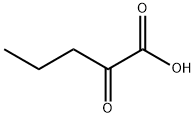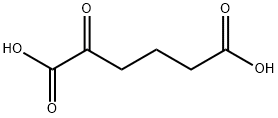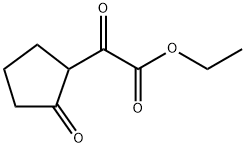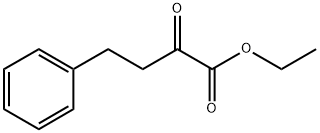2-Oxopentanoicacid , 98% , 1821-02-9
Synonym(s):
α-Ketovaleric acid;2-Oxopentanoic acid
CAS NO.:1821-02-9
Empirical Formula: C5H8O3
Molecular Weight: 116.12
MDL number: MFCD00066435
EINECS: 217-340-2
| Pack Size | Price | Stock | Quantity |
| 1g | RMB438.40 | In Stock |
|
| 5g | RMB1356.80 | In Stock |
|
| others | Enquire |
PRODUCT Properties
| Melting point: | 7-9 °C(lit.) |
| Boiling point: | 88-90 °C12 mm Hg(lit.) |
| Density | 1.110 g/mL at 20 °C(lit.) |
| refractive index | n20/D 1.432 |
| Flash point: | 94°C |
| storage temp. | 2-8°C |
| solubility | DMSO: ≥ 250 mg/mL (2152.95 mM) |
| pka | 2.65±0.54(Predicted) |
| form | Liquid |
| color | Colorless to light yellow |
| BRN | 635884 |
| CAS DataBase Reference | 1821-02-9(CAS DataBase Reference) |
Description and Uses
2-Oxovaleric acid, also known as 2-oxovalerate or a-ketovalerate, belongs to the class of organic compounds known as short-chain keto acids and derivatives. These are keto acids with an alkyl chain the contains less than 6 carbon atoms. 2-Oxovaleric acid has been detected, but not quantified in, several different foods, such as anatidaes (Anatidae), chickens (Gallus gallus), domestic pigs (Sus scrofa domestica), and herbs and spices. This could make 2-oxovaleric acid a potential biomarker for the consumption of these foods. 2-Oxovaleric acid is a secondary metabolite. Secondary metabolites are metabolically or physiologically non-essential metabolites that may serve a role as defense or signalling molecules. In some cases they are simply molecules that arise from the incomplete metabolism of other secondary metabolites.
2-Oxovaleric Acid can be used as a carbon source for immobilized bacteria in micro-biosensors.
Safety
| Symbol(GHS) |  GHS07 |
| Signal word | Warning |
| Hazard statements | H315-H319-H335 |
| Precautionary statements | P261-P264-P271-P280-P302+P352-P305+P351+P338 |
| Hazard Codes | Xi |
| Risk Statements | 36/37/38 |
| Safety Statements | 26-36 |
| WGK Germany | 3 |
| F | 10-21 |
| HS Code | 2918.30.9000 |





